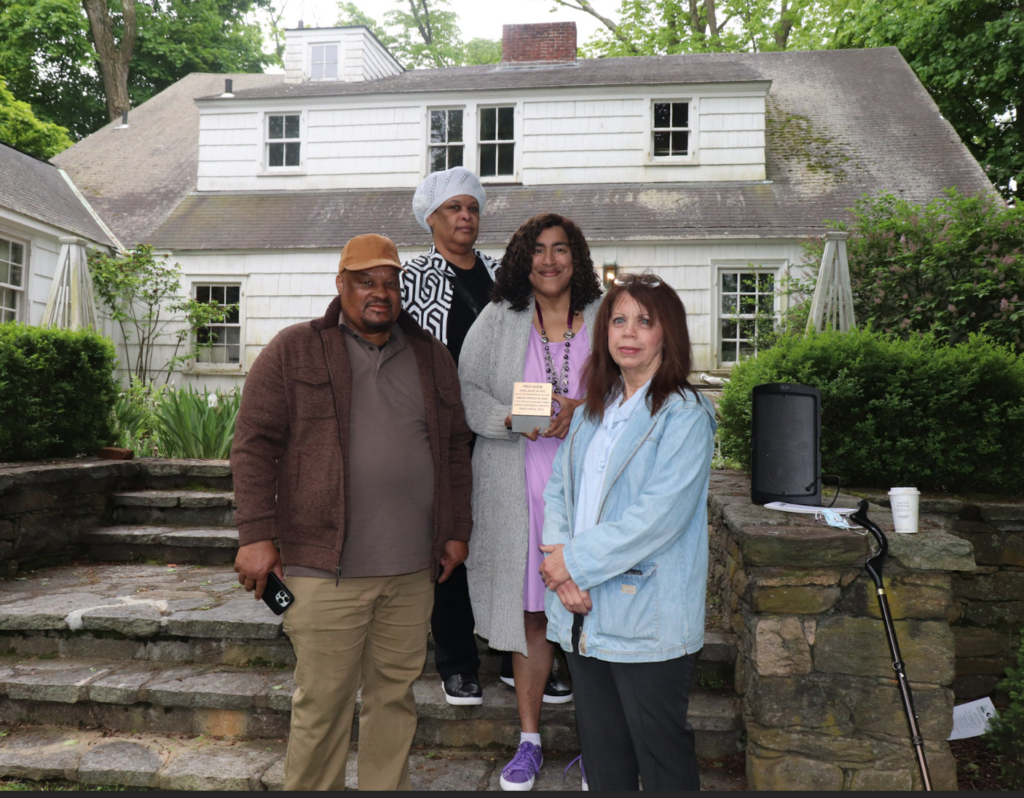
From Remembering Peg Lyon and Anthony Green by Descendant Teresa Vega
Who were Peg and Anthony Green? They represent the genesis of our ancestral lineage. Their descendants, including their sons—Charles Merritt, Jack Husted, Anthony Jr., Platt, Allan (my third great-grandfather), Henry, and Solomon—stand as testaments to their enduring legacy. While the specifics of their familial composition remain elusive—e.g, we don’t know if they had any daughters or, if any other children were sold way from them—we know that Peg bore sons fathered by Nathan Merritt Jr., as confirmed by autosomal DNA testing.
Peg was tri-racial with Munsee Lenape and mixed-race, with East and West African ancestry on her maternal side and British ancestry on her paternal side. Likewise, Anthony, confirmed through Y-DNA testing of a male patrilineal descendant, possessed a multifaceted heritage comprising Munsee Lenape and mixed-race ancestry on his maternal line, Malagasy, West African, English, Dutch, and French Huguenot roots on his paternal line. Both of their ethnic admixtures serve to solidify Peg and Anthony’s place within the historical fabric of our region.
As we approach the 250th anniversary of our nation’s founding, we are reminded of Peg and Anthony’s lived experiences amid pivotal historical epochs. They bore witness to the Revolutionary War, the War of 1812, and the subsequent reconstruction of Rye and other former “Neutral Ground” towns across Long Island Sound and the Hudson River that led these towns to become maritime and industrial powerhouses once again. Make no mistake, Rye would not be Rye today nor would any of these coastal communities exist if not for the rich maritime culture that supported them. The trade to the West Indies, Europe, Central and South America and to West and East Africa, underscores the importance of enslaved/formerly enslaved labor. I n 1760, many people don’t know that the New York militia was comprised of Men of Color ( i.e., African, Indigenous, Afro-Indigenous and Mixed-Race). Yet, Peg and Anthony’s journey was fraught with challenges, as the promise of freedom often yielded to new forms of unfreedom for themselves and their progeny.
The wrenching separation from their sons—Jack and Henry—at tender age of 3 years old serves as a poignant reminder of the human toll exacted by slavery’s grasp. Peg, born circa 1770 into the bonds of slavery, endured unimaginable hardships, including the scourge of sexual violence—a harrowing reality for many enslaved women of her time. Her almost 6 decades of service— for three generations— within the Lyon household, laboring tirelessly in various capacities. The fact that Lavinia Lyon Brooks, Daniel Lyon’s daughter, made a survival strategy decision to leave her son John Brooks tethered to Peg, who was his wet nurse during the War of 1812, speaks volumes of the family ties that bound these women together in perilous times and underscores the resilience and fortitude that defined Peg’s existence.
Anthony’s life, marked by toil and resilience, reflects the nature of Northern slavery. Engaged in diverse occupations—from agriculture to carpentry, from maritime ventures to port labor—Anthony’s journey epitomizes the myriad challenges faced by free Black individuals in antebellum America. His decision to flee, evidenced by the harrowing account of his toe being severed, demonstrates clearly the lengths to which individuals would go to assert their autonomy.
